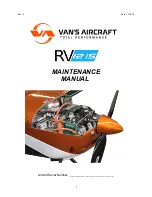
2
IMAGE 3
• Now slide the wedges into the gaps at
theback end of the mast. Start with one
oneach side of the fuselage, with the
flat
faces of the wedges in contact with the
fuselage. Slide the wedge retainer from
the back over the wedges and fuselage
to keep it in place. (See Image 4)
• Nex
t, attach the smaller
back wing with the flatter
side in contact with
the
bottom
of
the
fuselage. Use 2 of the M6
x 20mm screws. A shim
can be placed between
the
back
wing
and
fuselage with the rounded
end at the back. Typically,
the thicker the shim, the
more back foot
pressure and foil-flying
skill is required.
These
screws
pass
through the smaller wing and shim into the fuselage,
where it can be mounted in up to 5 different locations. Farthest back will
provide most lift and directional stability. Farthest forward will make for
a very agile and manoeuvrable foil. Use the 4mm Allen key and tighten
by hand. Do not overtighten the screws.
• The front wing slides tight onto the fuselage. Please note that the
curved side of the wing must be facing up towards the mast. Once it is
in position, screw in the M6 x 20mm screw that keeps the wing from























